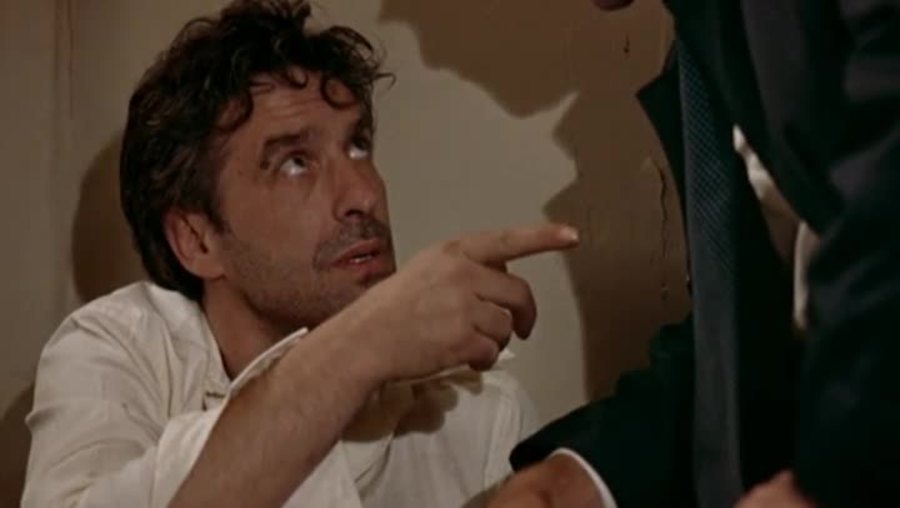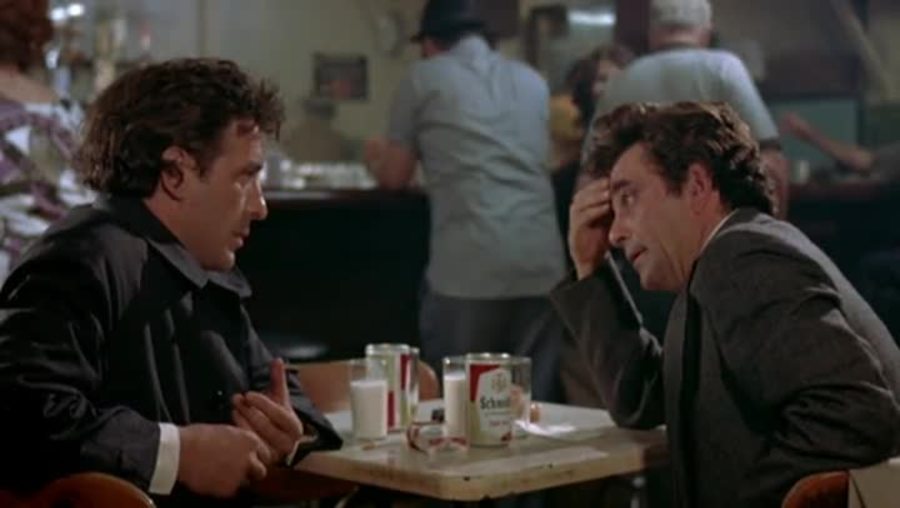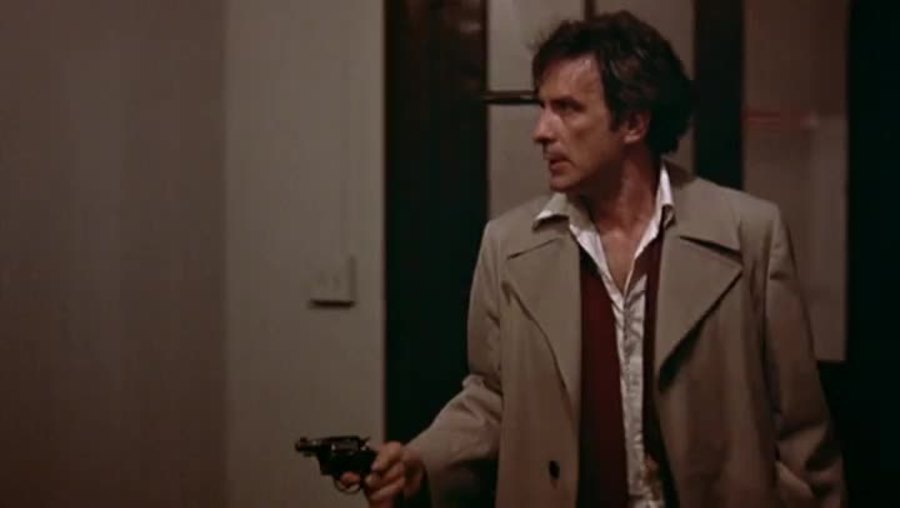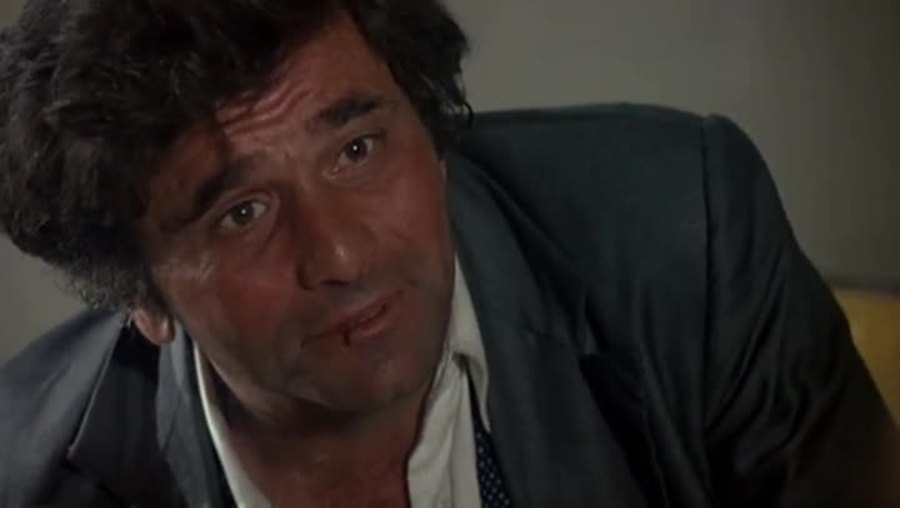Watching Elaine May’s Mikey and Nicky (1976) for the first time is like driving at night through an unfamiliar route full of curves and cliffs. You need to be vigilant, attentive, constantly readjusting your vision and hearing. You have to carefully read the signs and, at the same time, be ready for some sudden surprises. You can’t relax; your must tune your reflexes. Maybe, at some point in the itinerary, you’ll start thinking that you are becoming acquainted with the scenery. But what, from far away, looked like a charming, little village with reassuring, lit windows and distant, barking sounds, suddenly becomes, as you approach it, a landscape modeled from pure guilt, pain, and suffering, whose gigantic proportions engulf you.
Mikey and Nicky starts in full paranoiac mode: Nicky (John Cassavetes) hides in a hotel room, convinced that his boss has given an order to kill him. Desperate, he calls his friend Mikey (Peter Falk), but refuses to tell him the address of his hideout. Once Mikey arrives in the agreed spot (a street corner surveyed by Nicky from his room window), Nicky starts throwing empty bottles rolled up in a towel at him, which he can barely dodge: it’s Nicky’s idiosyncratic way of signaling his exact location for his friend.
Unlike the three other features directed by Elaine May—A New Leaf (1971), The Heartbreak Kid (1972), and Ishtar (1987)—Mikey and Nicky leans more toward drama than comedy. But, nonetheless, the film is full of exhilarating moments like this. Moments that, paradoxically, are also the darkest ones: their madness and violence always point to some obscure zone where this reckless behavior leaves a deep imprint. As often happens in May’s movies, humor aggravates rather than alleviates the mood, giving the movie a unique, extreme, bitter emotion.
The intensity of Mikey and Nicky owes a great deal to the fabulous performances of Falk and Cassavetes, two actors who are so in tune with their personae, so deeply imbued in them, that they make this very complex character study look like a film made on the spot (an impression also sustained by its aesthetic rawness, full of brusque changes in light and out-of-focus shots). But Mikey and Nicky is, in fact, an extremely elaborate film; one soon realizes that its intensity also springs from May’s ability to build a movie that rushes ever forward, with an incredible sense of urgency while, simultaneously, it inscribes, in its relatively brief time frame, the whole weight of a past—with its load of frustrations, humiliations, unresolved issues and unspoken feelings—shared by two individuals who have been very close to each other. And May does this directly, with a linearity that doesn’t need flashbacks or stupid, atmospheric tricks to rescue it.
Jonathan Rosenbaum has rightly noted that secret betrayal is the obsessive theme shared by May’s four features. Of course, betrayal is quite common in genres such as romantic comedy or the gangster/crime film—to which The Heartbreak Kid (1972) and Mikey and Nicky, respectively, belong. But betrayal, for May—rather than being simply a contractual genre obligation, or an excuse to set in motion and resolve the plot — becomes the true gravitational center of the piece; and this is true even of A New Leaf and Ishtar, her films that more clearly hold onto a specific generic model. In her work, the question of deceit is never just a matter of right and wrong, never just a clichéd, moral issue that is easy to clean up. Rather, the roles of victim and executioner are unstable, full of oscillations and reversals; often they create a fantasized self-image that acts as a mask—as a cover for a deeper dissatisfaction and a more complex reality.
Moreover, all of her films are woven around a betrayal that is announced early on, followed by its largely postponed confession or completion. And it’s precisely this in-between time, with all its turnarounds, shifts, and hesitations, that May obsessively draws and explores. If the whole first part of The Heartbreak Kid, for instance, relies on the necessity and difficulty of the protagonist to confess his deceit to his wife and pursue a new life with another woman, Mikey and Nicky are entirely built on the sheer impossibility of admitting betrayal as an idea, as a thought, let alone as an actual fact. From start to end, the film is driven by uncertainty and suspicion precisely because neither of the protagonists can face or directly address the possibility of a betrayal.
It takes several viewings to tackle the careful layering designed by May—small behavioral details, seemingly illogical reactions, verbal slips, and offhand revelations—in order to address this dual impossibility, this dual denial. As a writer, she has created not only superb dialogue but also a very tight narrative structure that generally follows the rule of ‘one place for each scene’ (avoiding intercutting for the most part) while, simultaneously, working with retrospective accumulation: forcing the viewer to constantly reconfigure his or her knowledge about the characters and their situation.
This ambiguity was something highly valued and pursued by May, who spent two years editing 300 hours of material. The production company, tired of waiting, took it from her and released their own version in 1976. A compromise was reached in a cut released in 1980 and approved by May (this is the film we see today). But, subsequently, she kept testing different editing options and variations; in 1986, she screened an ultimate, authorized version of the film at MoMA. It was ten minutes shorter, with some scenes suppressed and some crucial information buried, in order to complicate even further the viewer’s knowledge and understanding of the situation as it unfolds.
No matter the version, in less than two hours, while the night moves and the clock ticks, May keeps the viewer breathless, totally involved in this epic portrait of a friendship that is both tender and toxic, warm and consuming, intricately rooted in a shared childhood not totally abandoned—isn’t Mikey and Nicky (with the contraction in both names) a great title for a gangster movie?
A perfectly reversed rhyme frames the film, insisting once more on the vampiric bond between the two men, and pushing it to its most dramatic effect. Mikey and Nicky start with a door that, after much hesitation and some violence, is opened, allowing the reunion of the two friends, welcoming the possibility of salvation. And, in a devastating, superbly constructed ending, another door is painfully bolted and barred: a blockage splitting the space, disjoining the bodies which, nonetheless, melt in a common disintegration. As Pedro Costa said of Kenji Mizoguchi: “A closed door leaves us guessing …”







